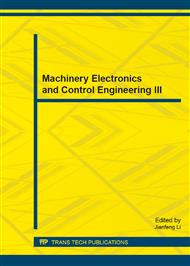p.1040
p.1044
p.1049
p.1055
p.1060
p.1064
p.1068
p.1072
p.1077
TRIZ Evolution Theory Applied to Man-Made Boards
Abstract:
Man-made boards often made use of waste wood materials. China is one of the worlds largest manufacturers and consumers of man-made board applications. Application of the law of evolution with a S-shaped curve could contribute essentially to the accuracy of the long-term forecast. This research seeks to determine the current stage and the position on the S-curve of man-made board technology in China on the TRIZ evolution theory and introduce a methodology which combines patent analysis and technology life cycle forecasting to find a niche space of man-made technology development in China.
Info:
Periodical:
Pages:
1060-1063
Citation:
Online since:
December 2013
Authors:
Keywords:
Price:
Сopyright:
© 2014 Trans Tech Publications Ltd. All Rights Reserved
Share:
Citation:


